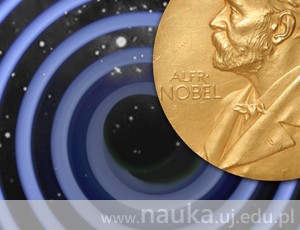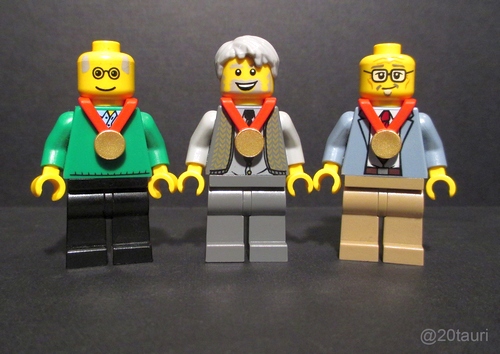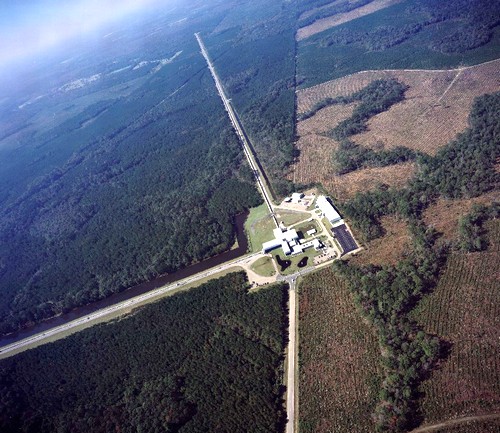
Einstein was not wrong. His theoretical analyses have been proven by experiments conducted within the framework of the LIGO/VIRGO project - gravitational wave detection. This spectacular achievement has brought its fathers - Rainer Weiss, Barry C. Barish and Kip S. Thorne - this year’s Nobel Prize. In this article, we’ll try to explain what it’s all about.
A long time ago in a galaxy far, far away… two black holes, each with a mass about 30 times greater than that of the Sun, collided with each other. As a result, enormous amount of energy was emitted into space in the form of gravitational waves. On 14 September 2015, a trace of this energy was detected on Earth. The distance travelled by the waves is an impressive 1.3 billion light years.
Discovering the waves wouldn’t be possible if not for the tireless effort of hundreds of physicists throughout the last few decades. Einstein himself actually didn’t believe it would ever be possible to prove his theory. And yet it happened, largely due to the three awarded researchers. In mid-1970s, Rainer Weiss was working on reducing the interference in measuring equipment. He designed a special detector called a laser interferometer, capable of providing very precise measurements without background noise. Together with Kip Thorn, he believed that in the future it would be possible to capture gravitational waves. And 40 years later, it happened.

We asked Prof. Michał Ostrowski from the JU Astronomical Observatory to comment on this year’s Nobel Prize in Physics. Since he participates in the LIGO/VIRGO project, he has also contributed to this great event.
When giants collide
Gravitational waves, i.e. ‘gravity field wrinkles’ propagating in space at the speed of light, are in essence similar to electromagnetic waves’, explained Prof. Ostrowski. However, the gravitational interactions between a nucleus and electrons are far weaker than their electrical counterparts. This means that to be able to observe a gravitational interaction, it has to be exceptionally strong. ‘Only extremely violent phenomena that include massive gravitational fields, like a collision of two black holes or neutron stars, can produce waves that can be measured by man’, he added.
'Currently, the measurements are limited only to such extreme cases. In the case of the first measurement of gravitational waves on Earth, the result of a collision between two black holes, the power emitted in the form of gravitational waves was so vast that their energy was equal to several invariant masses of the Sun. During that moment, it was more than the combined radiation of the rest of the observable Universe’, stressed the researcher.
Nearing the cradle of the universe
‘The signal was extremely weak when it reached Earth, but is already promising a revolution in astrophysics’, reads the statement of the Nobel Committee regarding the prize. Whence come these predictions?
‘Even now, the first measurements of black hole collisions and neutron stars have greatly contributed to our understanding of astrophysics’, said Prof. Ostrowski. ‘We have opened a new conduit through which we can study the far reaches of the Universe, and perhaps even its beginnings’, he explained.

Gravitational waves travel at the speed of light and fill the Universe. They need not be the results of cataclysmic events – they can also be created during much more ordinary events, like car crashes. ‘Gravitational waves are created by nearly all moving objects, as long as it’s not a spinning movement of a sphere or spin. But these gravitational waves are so minuscule that they are of no interest to physicists, and we probably wouldn't be able to detect them anyway’, said Prof. Ostrowski.
‘We’ve captured the cosmic gravitational waves and we’re currently studying the data to learn more about space and gravity. So far, Einstein’s general relativity theory is spot on’, summed up Prof. Ostrowski.
For many years, a large team composed of members of Polish scientific institutions working under the supervision of Prof. Andrzej Królak from the Polish Academy of Sciences, called POLGRAW, has been contributing to research on gravitational waves. ’In 2015, a Kraków-based team has joined the POLGRAW project, with the aim of measuring extremely low frequency electromagnetic waves. I’m leading it together with Dr hab. Andrzej Kułak from the AGH University of Science and Technology Chair of Electronics (WERA project). Our research will allow us to rule out any correlated measurements of distant gravitational wave detectors in cases where the microscopic effects they track are in fact caused by electromagnetic interactions. As far as LIGO is concerned, our measurement station in the USA, located about halfway between the detectors, is performing remarkably well’, Prof. Ostrowski told us.
Original text: www.nauka.uj.edu.pl





